Part 2 of the A220 Saga
By Roberto Motta
Color images by Roberto Motta
The 1969 season
In February 1969 the cars and all the necessary equipment were transferred to the Renault workshops in Gordini Viry -Châtillon, a suburb south of Paris. In view of the changes, Geoges Sauva was appointed technical director.
At the same time, Gordini began the construction of the new T64 engine which used a 4 valves per cylinder and was powered by mechanical injection. The T64 never got beyond the stage of experimentation due to frequent breakdowns.
Meanwhile, the development of the A220 continued with the changes that led to a new line and a different weight distribution. The water and oil radiators were moved from the side of the car and cantilevered at the rear. The front hood was equipped with an air intake of an ovoid shape, while the rear lid was equipped with wheel arch extensions . Finally, to improve drivability, the suspensions attachments were modified and De Carbon shocks were replaced with higher performance Konis; the measurement of the front and rear track were increased, and a wing was added to the entire width on the rear lid.
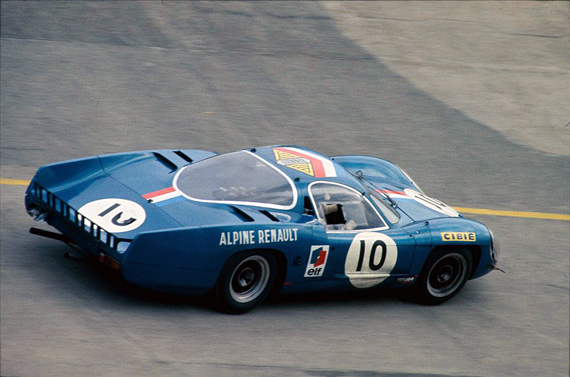
The A220 on the banking at Monthlhery in October 1968,with Depailler up. The cars finished well down in the field.
The new car, called A220B, debuted in the 1000 km of Monza on April 25, where there were three cars entered. The A220-1735, constructed in 1968, was driven by Depailler and Jabouille and took 6th place overall, although it was destroyed in an accident with the Gardner Lola in the last lap. The A220B-1734 driven by de Cortanze and Vinatier, was forced to retire with an engine failure due to excessive vibration. The third car was assigned to the pilots Andruet and Grandsire which was classified in 17th position.
A few weeks later, on May 11 at the 1000 km of Spa cars were again entered. The A220-1731 driven by Jabouille and Grandsire and was forced to retire due to a gearbox problem, while the A220B-1734 and A220B-1736, were assigned respectively to de-Cortanze Vinatier and Andruet/van Lennep. The two cars finished the race in 17th and 21st place overall.
After more private testing, the time came for the 24 Hours of Le Mans. The classic French marathon which took place in June of 1969 witnessed the entry of four A220s. None of the four cars managed to finish the race.
Car number 28, chassis 1737 for de Cortanze and Vinatier, qualifying 18th, retired after 133 laps with lubrication problems.
Car number 29, chassis 1736 for Depailler and Jabouille, was forced to retire on lap 257 due to the failure of a connecting rod.
Car number 30, chassis 1734 for Grandsire and Andruet, ended the race after 48 laps due to a blown head gasket and the consequent problems of overheating.
Car number 31, chassis 1731 driven by Nicolas and Thérier, qualified 19th but ended race on lap 160 with another blown head gasket.
The Gordini V8 was proving too fragile and not powerful enough to compete against the 400 hp delivered by the engines of competition. Even with a long series of tests, the technicians were not able to solve the overheating problems that inevitably led to mechanical failures.
During the ’69 season, chassis A220-1731 was entrusted to Jean Vinatier on two occasions. The first was to participate in the time trial of the Cote de Chamrousse, a race which took place July 27, and the A220 placed third. At Nogaro ‘coupe de paques’ on August 17, Vinatier took 2nd place overall. So, the A220 so allowed Vinatier to win the French Championship.
Equipped with a rear bodywork shortened by 30 cm and extra lights and side stabilizers bibs on the front hood, the A220-1731 was entrusted to Jean Pierre Jabouille to participate in the Critérium des Cévennes. To be able to participate in this competition, the car was duly registered by acquiring the vehicle identification number 569-69-76 and the license plate GN 4517 76. It was also equipped with fans located behind the radiator water, an over-sized electrical system, and the engine was equipped with smaller carburetors. But for this A220 the race was short: it was forced to retire during the second special stage with a broken alternator.
The end of a dream and the revival towards the World Rally Championship
With the championship virtually finished, technicians Alpine looked at the grim situation. After all this only one point with the 6th place finish in the race at Monza was gained. Yves Geoges, director of Renault Design, took note that the Gordini V8 would never be competitive, and decided to stop the Endurance program. The Alpine A220 was abandoned in favor of a greater commitment to rally, and promotional formulas and as a result, saw the Alpine A110 winning the World Rally Championship in 1973.
In Italia
La stagione 1969
Nel febbraio del ’69, le vetture e tutte le attrezzature necessarie, furono trasferite nelle officine Renault-Gordini Viry-Châtillon, un sobborgo a sud di Parigi e, nell’ottica dei cambiamenti, Geoges Sauva, fu nominato direttore tecnico.
Contemporaneamente, Gordini iniziò la realizzazione del nuovo propulsore ‘T64’ che sfruttava una distribuzione a 4 valvole per cilindro ed era alimentato mediante iniezione meccanica. Il ‘T64’ non superò mai la fase della sperimentazione a causa delle frequenti rotture.
Nel frattempo, lo sviluppo della A 220 proseguì con le modifiche che portarono a una nuova linea delle vettura e a una differente distribuzione dei pesi.
I radiatori acqua e dell’olio vennero spostati dal lato della vettura e montati a sbalzo nella parte posteriore. Il cofano anteriore, abbandonò la presa d’aria rettangolare posta al centro del muso, e venne dotato di una presa d’aria di forma ovoidale, mentre il cofano posteriore fu dotato di passaruota allargati. Infine, per migliorare la guidabilità vennero modificati gli attacchi delle sospensioni, sostituiti gli ammortizzatori De Carbon con più prestanti Koni; venne maggiorata la misura della carreggiata anteriore e posteriore, e introdotto un alettone a tutta larghezza sul cofano posteriore.
La nuova vettura, denominata A 220B, debuttò nella1000 km di Monza del 25 aprile, dove erano presenti tre vetture. La A 220-1735, in allestimento ’68, condotta da Depailler e Jabouille conquistò il 6° posto assoluto, pur rimanendo distrutta in un incidente con la Lola di Gardner nel corso dell’ultimo giro. La A 220B-1734, in allestimento ’69, condotta da de Cortanze e Vinatier fu costretta alla resa per rottura del motore a causa delle forti vibrazioni.
La terza vettura, in allestimenti 68, venne affidata ai piloti Andruet e Grandsire. Classificata in 17a posizione non prese il via per la rottura del motore.
Poche settimane dopo, l’11 maggio, in occasione della 1000 km di SPA vennero iscritte tre vetture. La A 220-1731, in allestimento ’68, condotta da Jabouille e Grandsire fu costretta al ritiro per rottura del cambio mentre la A 220B-1734 e la A 220B-1736, entrambe in configurazione ’69, furono affidate rispettivamente a de Cortanze-Vinatier e a Andruet-van Lennep. Le due vetture terminarono la gara al 17° e 21° posto assoluto.
Dopo altri test privati, arrivò il momento della 24 ore di Le Mans.
Alla classica maratona francese che si svolse il 14 e giugno ’69, vennero iscritte quattro A 220. Nessuna delle quattro vetture riuscì a terminare la gara.
Le vetture iscritte erano la n° 28, telaio 1737, per de Cortanze e Vinatier, che partita con il 18° tempo, terminò la gara dopo 133 giri per problemi di lubrificazione.
La n° 29, telaio 1736, per Depailler e Jabouille. Partita con il 20° tempo fu costretta al ritiro al 257° giro a causa della rottura di una biella.
La n° 30, telaio 1734, per Grandsire e Andruet. Partita con il 21° tempo terminò la sua corsa dopo 48 giri di gara a causa della rottura della guarnizione della testata e a conseguenti problemi di surriscaldamento e lubrificazione.
Con questa gara, Henri Grandsire concluse la sua carriera di pilota.
Infine la n° 31, telaio 1731, in allestimento ’68 e affidata a Nicolas e Thérier, prese il via con il 19° tempo concludendo la sua gara al 160° giro per rottura della guarnizione della testata.
Principale imputato delle ‘brutta figura’ delle Alpine fu quindi il propulsore V8, troppo fragile e poco potente per competere contro gli oltre 400 cv erogati dai propulsori della concorrenza. Pur con lunghe serie di test, i tecnici non erano riusciti a sopperire ai problemi di surriscaldamento che portavano a inevitabili rotture meccaniche.
Nel corso della stagione ’69, la vettura A 220-1731, venne affidata in due occasioni a Jean Vinatier per partecipare alla cronoscalata di Còte de Chamrousse, gara che si svolse il 27 luglio, allestita in versione ‘courte’ la A 220 terminò in terza posizione e, a Nogaro ‘coupe de paques’, dove, il 17 agosto, conquistò il 2°posto assoluto. La A 220 consentì così al pilota di aggiudicarsi il Campionato Francese. Sempre in allestimento ‘courte’, ossia dotata della una carrozzeria posteriore accorciata di 30 cm e di fari supplementari e bavette stabilizzatrici laterali sul cofano anteriore, la A 220-1731 venne affidata a Jean Pierre Jabouille per partecipare al Critérium des Cévennes. Proprio per poter partecipare a questa competizione, la vettura venne regolarmente immatricolata acquisendo il numero di telaio 569-69-76 e la targa di circolazione 4517 GN 76. Meccanicamente la vettura venne dotata di ventilatori posti dietro i radiatori dell’acqua, posteriori laterali, di un impianto elettrico sovradimensionato e il motore venne dotato di una alimentazione con carburatori di dimensioni minori, parallelamente ad un tunig mirato a favorire l’erogazione della coppia e della guidabilità in un percorso stradale sinuoso.
Per la A 220 la gara fu breve: fu costretta al ritiro nel corso della 2a prova speciale per rottura dell’alternatore.
La fine di un sogno e il rilancio verso il Mondiale Rally
Con il campionato virtualmente finito, i tecnici Alpine fecero il punto della situazione e si resero conto di aver conquistato, nel mondiale marche, un solo punto con il 6° posto ottenuto nella gara di Monza.
Yves Geoges, direttore della ‘Renault Design’, prese atto che il V8 Gordini non sarebbe mai stato competitivo, e decise di interrompere il programma Endurance e, i tecnici Alpine, capitanati da Rédele, si ritrovarono senza un motore valido e con il reparto corse sommerso da impegni per via dell’assistenza alle varie vetture prodotte, dalla F3 alla Formula France, alle vetture da Rally.
Il programma A 220 venne abbandonato a favore di un maggiore impegno nei rally, e nelle formule promozionali che portò ben presto a buoni risultati e che vide l’Alpine A110 conquistare il Campionato Mondiale Rally nel ‘73.
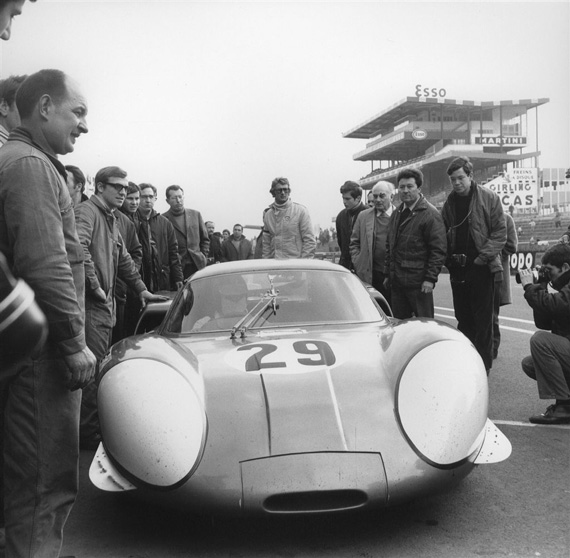
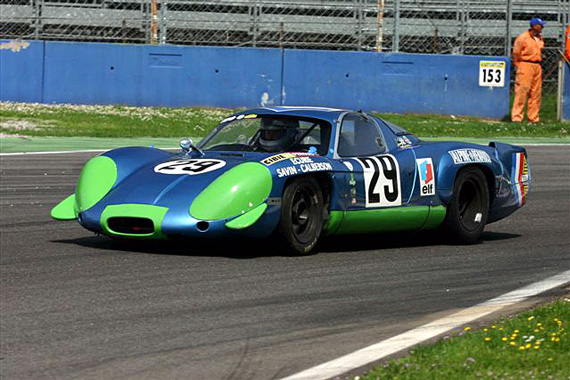
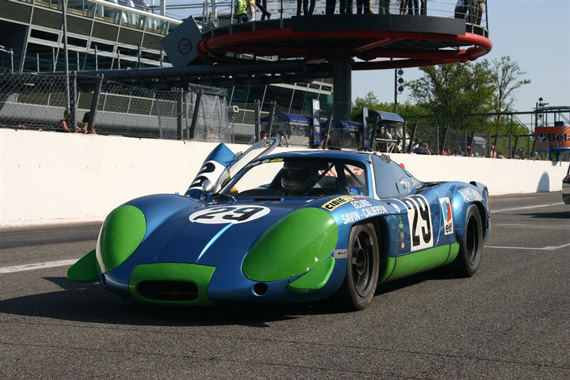
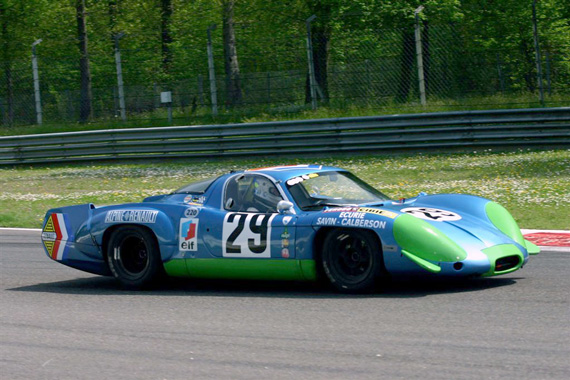
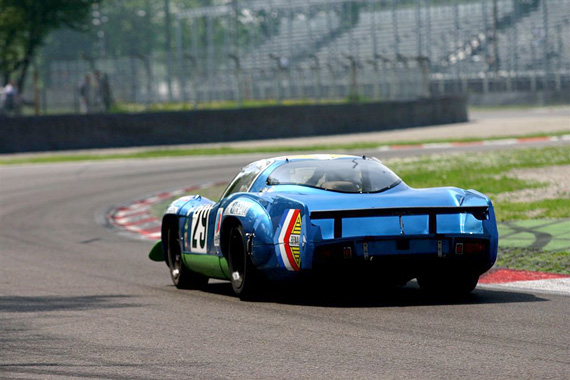
I have only seen a couple of pictures of the A220 participating in the Criterium de Cevennes and I assume it was still equipped with the V8 which would have been a handful for that event, I would have thought.
Kind regards, Mark Duder.
saw all three cars in a garage just past le source .shared with Ferrari prototype and sedans . I remember thinking what beautiful cars. in practice however it was obvious they wereno match for the competition.
The A220 used in the Criterium des Cevennes was chassis number 1731 and was equipped with the 3-litre V8 DOHC Gordini engine. It also has a map light for the co-driver and a grab handle on the left hand screen pillar. 1731 is the only A220 that was registered for road use, 4517 GX 76, is currently in its Cevennes configuration and is the only A220 still in side radiator configuration.